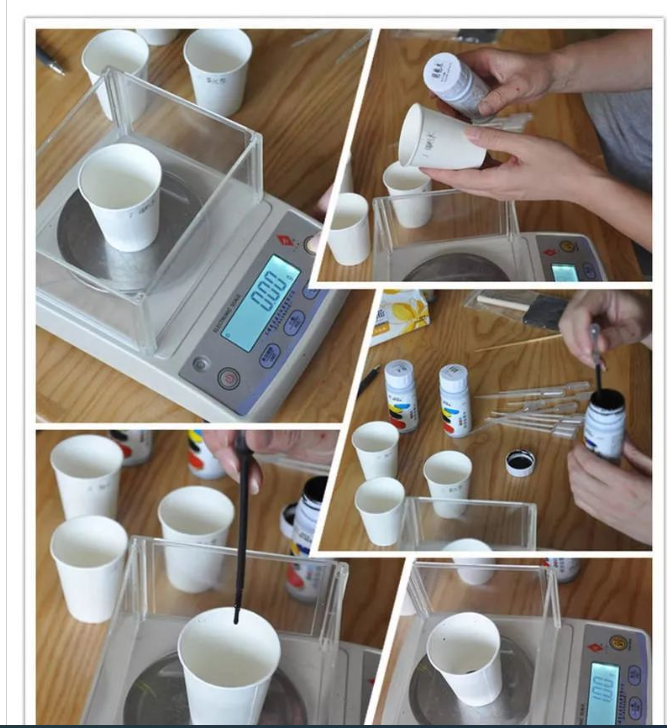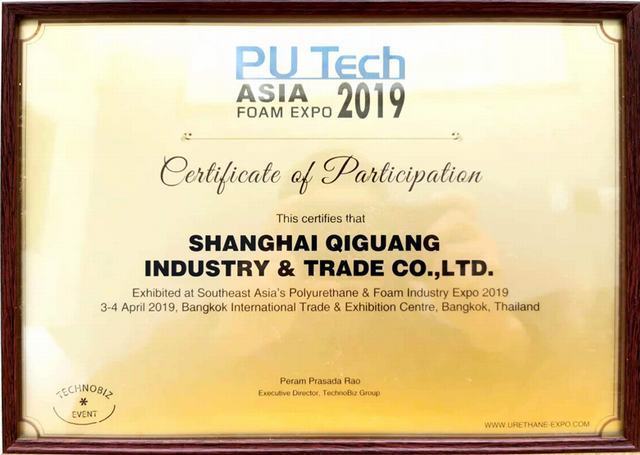Trimethylolpropane trioctanoate/tricaprate is a synthetic ester grease, an environmentally friendly lubricant base oil with outstanding thermal stability and low stable temperature performance, and has good spreading properties and excellent biodegradability with low toxicity. Among them, trimethylolpropane trioctanoate/tricaprate is a high quality saturated polyol ester, a new type of efficient and refreshing emollient and moisturizer, which can quickly improve the moisture retention of skin and hair in personal care products, moisturize hair, prevent hair from drying, and make hair brighter and smoother.

1、Experimental background and purpose
Shampoo is an essential cleaning product in our life. On the one hand, we desire mild washing products to clean our hair, and on the other hand, we want our hair to be well taken care of. In the past, traditional shampoos generally used cationic conditioning agents with silicone oil to provide smoothness and conditioning to the hair. Silicone oil has good film formation and high surface activity, also has excellent defoaming, anti-foaming properties, easy to form a very thin film to protect the hair and provide a very excellent smooth touch, silicone oil with its superior hair smoothing performance and excellent cost performance, has been widely used in shampoos.
In recent years, there have been more and more negative media reports on silicone oil, making people more or less wary of silicone oil, coupled with the birth of the Ziyuan brand in 2014, the brand’s strong publicity, silicone-free shampoo shampoo this frenzy continues to affect the shampoo shampoo subcategory, whether it is a popular brand or high-end luxury brands, have launched silicone-free shampoo one after another. However, the silicone oil in shampoo provides a smoothness that is difficult to replace by other oils. How to make the conditioning performance of silicone-free shampoo good is now a challenge in the industry.
Trimethylolpropane trioctanoate has -OH group on its structure, and can form hydrogen bond with moisture in the air, which is obviously different from silicone oil film-forming. Trimethylolpropane trioctanoate has good durability of moisturizing both skin and hair, forming a breathable and water-permeable film on skin and hair, which will not block pores; coupled with high spreading coefficient and fast spreading speed, it is not easy to form a sticky oil feeling, and can be used in shampoos to provide Smooth and soft rinse feeling, and can be effectively retained to the hair, to provide a sense of moisturization to the subsequent wet and dry comb.
However, trimethylolpropane trioctanoate is a polar oil, which can easily destroy the original stable micelle system in the washing formulation, resulting in the risk of viscosity reduction of the system. In this paper, we focus on the influence of the temperature of adding trimethylolpropane trioctanoate to shampoo system and the treatment method of trimethylolpropane trioctanoate on the viscosity stability of shampoo, and find out the pattern to optimize the process conditions of adding trimethylolpropane trioctanoate to shampoo.
The viscosity stability of shampoo is one of the key factors to ensure its conditioning performance and appearance performance stability, which directly affects the heat and cold resistance of the product as well as the consumer’s repeat purchase confidence, and affects the performance stability and shelf life of the product, so the viscosity stability of a product is particularly important.

2、Experimental raw materials and instruments
2.1 Experimental raw materials
Guar hydroxypropyl trimethyl ammonium chloride (Model: JAGUAR C-162, Dow), EDTA 2Na, cocamidopropyl betaine (Model: Ucefactant BE-50HP(Y), 38% active substance, Guangzhou Xingye), sodium laureth sulfate (Model: AES 270NII, Sasol), sodium lauryl ampholytic acetate (Model. Ucefactant AMC 65L, active substance: 38%, Guangzhou Xingye), potassium lauryl phosphate (Model: Ucefactant MAP 65, active substance: 42%, Guangzhou Xingye), lauryl lactate (Model: Ucegreen LA-20, Guangzhou Xingye), cocamide methyl MEA (Model: Uceomid HM800, Guangzhou Xingye), trimethylolpropane (Model: Uceomid HM800, Guangzhou Xingye), trimethylolpropane trioctanoate/tridecanoate (Model: Ucesoft TP810, Guangzhou Xingye), PEG-7 cocoglycerate (Model: Glycerox HE, Hoda), polyglyceryl-3 isostearate (Model: JH-LPI-03, Guangzhou Jinhui), D-panthenol, carson, citric acid.
2.2 Experimental instruments
JJ1000 type electronic balance (precision 0.01), IKA digital display mixer, JB300-D type powerful electric stirrer
3.1.2 Shampoo preparation process.
Beaker weighing deionized water, and add JAGUARC-162, stirring until transparent and non-granular, then add Ucefactant BE-50HP (Y), AES 270N Ⅱ, stirring until completely dissolved, start heating up to 75 ℃, add the remaining raw materials of phase A, constant temperature and stirring for 15min; start cooling down, the temperature drops to 65 ℃, add the raw materials of phase B, stirring After 15min, continue to cool down to 45℃, add C-phase raw materials in turn, stir well, according to 10% aqueous solution, determine the pH of the system, adjust the pH to a suitable range with citric acid, and finally adjust the viscosity with Ucefactant BE-50HP(Y) and Nacl.
3.1.3 Test sample preparation
In the experiment, in order to exclude the difference of raw material itself from causing deviation to the experimental results, the raw material of the same batch was used in the experiment. The experimental base sample was prepared according to step 3.1.2 to investigate the effect of the treatment of trimethylolpropane trioctanoate/tricaprate on the viscosity of the system, the B-phase raw material trimethylolpropane trioctanoate/tricaprate was directly added to the shampoo, the experimental number was recorded as 1#, trimethylolpropane Trimethylolpropane trioctanoate/tricaprate was mixed with PEG-7 cocoglycerate and then added to the shampoo, and the experimental number was recorded as 2#, and trimethylolpropane trioctanoate/tricaprate was mixed with polyglyceryl-3 isostearate and then added to the shampoo, and the experimental number was recorded as 3#.
The viscosity change curve of one month stability measurement is as follows, including heat resistance and room temperature stability.
1 # 65 ℃ trimethylolpropane trioctanoate / tricaprate added directly into the shampoo, the sample heat-resistant 45 ℃, room temperature for a week, the shampoo viscosity has been significantly reduced, and the viscosity reduction is very large, so it is not recommended trimethylolpropane trioctanoate / tricaprate added directly into the shampoo.

And 2# trimethylolpropane trioctanoate/tricaprate with HE treatment and then added into the shampoo, the speed of heat-resistant viscosity reduction of the shampoo was alleviated, but the final viscosity of the shampoo also changed more, so the PEG-7 cocoglycerate treated trimethylolpropane trioctanoate/tricaprate also could not be stable in the shampoo.
The viscosity of the shampoo system was more stable and there was no viscosity drop, so the polyglyceryl-3 isostearate treated trimethylolpropane trioctanoate/tricaprate could be added to the shampoo and would not cause the viscosity of the shampoo to decrease.
3.2 Investigation of the effect of trimethylolpropane trioctanoate/tricaprate addition temperature on the viscosity stability of the system
3.2.2 Experimental process
According to the results of the above experiments, the trimethylolpropane trioctanoate/tricaprate treated with polyglyceryl-3 isostearate does not cause a decrease in the viscosity of the shampoo, so the effect of the addition temperature of trimethylolpropane trioctanoate/tricaprate on the viscosity of the system is further investigated to determine the best addition temperature. The experimental formulation process is as in step 2.3.2, the B-phase ingredients were added at different temperatures, 75℃, 65℃, 55℃ and 45℃, numbered 4#, 5#, 6# and 7# one by one, and another blank without trimethylolpropane trioctanoate/tricaprate control sample, numbered 8#.
The viscosity of the day was measured and recorded, and the stability test was done at 45℃ and room temperature respectively, and the viscosity was measured once every week to observe the change of viscosity.
3.2.3 Results and discussion
The following is the viscosity change curve of shampoo heat resistant 45℃ and room temperature for one month.
8# is no added trimethylolpropane trioctanoate / tricaprate blank comparison sample, heat-resistant 45 ℃ viscosity rose in the early stage, but the subsequent viscosity tends to level off, the viscosity fluctuations at room temperature is not much, the viscosity of the blank comparison sample is more stable. And 4# and 7# whether heat-resistant 45 ℃ or room temperature, viscosity after the fourth week have a tendency to decline, probably because the addition temperature of 75 ℃ is too high, and 45 ℃ is too low, which is not conducive to the stability of oil in the shampoo. 5# and 6#, room temperature stability shampoo system viscosity are relatively stable, heat-resistant 45 ℃ 6# viscosity fluctuations than 5# samples, and heat-resistant 45 ℃ after four weeks, 6# shampoo Viscosity also has a tendency to decline, although not particularly obvious, but 6# sample and 5# sample comparison, 5# viscosity change is stable, so a comprehensive consideration of trimethylolpropane trioctanoate / tricaprate 65 ℃ added to the shampoo on the shampoo viscosity effect is small, viscosity stability.

